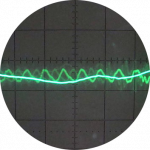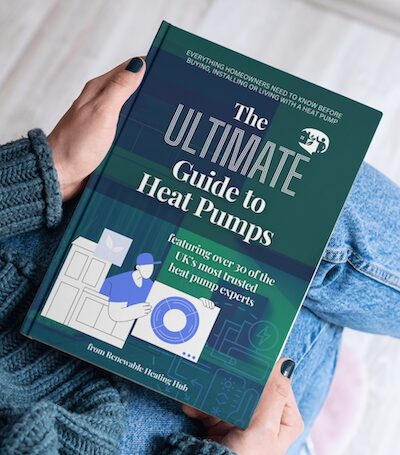UFH downstairs and radiators upstairs balancing question
I am running pure WC on .4 curve in our new build with UFH downstairs and Radiators upstairs. This is a single zone with radiators sized as per the design. Whether that design was competent or not is to be determined.
Downstairs temperature is measured in the hallway at 23 degrees C ,while the 'desired' is 21.5. i have tried to back off the Hallway circuit. Stat is wired and in the hallway.
Does anyone have a proven strategy for getting more heat out of the radiators upstairs while not overheating the downstairs UFH?
When i try to look at the flow valves on the manifold to see where the red disc indicators are sitting i find that there is no flow because there is no call for heat for such long periods of time. Perhaps this is an indication that the UFH combining with the level of insulation and airtightness means very little heat is actually needed.
Did i explain that well enough?
Posted by: @walnut-tree-cottageI am running pure WC on .4 curve in our new build with UFH downstairs and Radiators upstairs. This is a single zone with radiators sized as per the design. Whether that design was competent or not is to be determined.
Downstairs temperature is measured in the hallway at 23 degrees C ,while the 'desired' is 21.5. i have tried to back off the Hallway circuit. Stat is wired and in the hallway.
Does anyone have a proven strategy for getting more heat out of the radiators upstairs while not overheating the downstairs UFH?
When i try to look at the flow valves on the manifold to see where the red disc indicators are sitting i find that there is no flow because there is no call for heat for such long periods of time. Perhaps this is an indication that the UFH combining with the level of insulation and airtightness means very little heat is actually needed.
Did i explain that well enough?
Have you tried turning up the stat and turning down the flow rate to the UFH. If the stat is acting as a call for heat (which it sounds like it it) this will ensure that the heat pump is running continuously rather than being turned on/off, thus delivering heat to the rads rather than starving the rads of heat. By turning the UFH flow down you restrict the amount of heat to the UFH, without simultaneously restricting the heat to the rads. Its essentially balancing. You may need to adjust the WC curve down.
Ideally you should get to a point where all stats and TRVs (or at least most of them) are set well above (at least 2C, but start off with setting them to max) the desired temperature, the flows are adjusted so that the relative room temperatures are correct, and the WC adjusted to the minimum level possible consistent with just heating the house. This is basically how an ASHP should be operated for max comfort and efficiency. It would be worth your while reading this guide.
Have you got a buffer/LLH between heat pump and emitters? How many water pumps are there?
4kW peak of solar PV since 2011; EV and a 1930s house which has been partially renovated to improve its efficiency. 7kW Vaillant heat pump.
No Buffer
No LLH
I think there is only the pump in the Arotherm. 32mm pipework from pump to inside the house under the stairs then 28mm up to cylinder.
Posted by: @walnut-tree-cottageNo Buffer
No LLH
I think there is only the pump in the Arotherm. 32mm pipework from pump to inside the house under the stairs then 28mm up to cylinder.
Brilliant news, simple is best.
In that case I suggest you try what I am suggesting above. I reckon that the stat and balancing are your problems, basically the stat needs to come out of the control loop (by setting it to max) so that it doesn't choke off the supply to the upstairs, and you need to balance upstairs and downstairs.
I would also initially set the Arotherm to no room influence (installer menu on the sensocomfort) otherwise the room temperature sensor in the sensocomfort will act in a similar way to the stat and choke off supply prematurely, unless of course you locate the sensocomfort upstairs.
Once you have got it balanced you may tweak, but until this is basically right you need to be operating on pure weather compensation with no external or room temperature controls.
4kW peak of solar PV since 2011; EV and a 1930s house which has been partially renovated to improve its efficiency. 7kW Vaillant heat pump.
This is a tricky one. I'm having the same problem. A poorly done heat pump design with UFH and rad split. Now running it all open zone and its very tricky to get the rads to actually do anything useful. The rads and UHF were designed to different flow temps...... the UFH works well at very low flow temps, that's generally OK for the rooms above as being a degree or 2 cooler is not a massive problem, but there is one part of the hose that is served by rads where the gap gets a bit wide. My installer advised turning all the pumps to max to narrows the DT through the UFH. I've dabbled a bit with this, but will come back to it when its colder and get a better idea. They also put another pump on the primary circuit to get more flow into the house. So I've got 6 (not s miss print) pumps in my 260m2 and 11Kw house heat loss, tricky to balance all them
@davidnolan22 First I must declare I know naff-all about setting up UFH combined with radiators in other rooms but… I believe that it is normal practice to run the flow temperature as low as possible to ensure the radiators provide the heat required for the comfort level required in those rooms. The feed to the UFH manifold needs a lower flow temperature and this is achieved by blending with a cooler supply. Is this being done on your circuits? Regards, Toodles.
Toodles, heats his home with cold draughts and cooks food with magnets.
not yet. The UFH takes the slightly warmer flow due to its position on the low loss header.
@walnut-tree-cottage - Pop all the heads off the UFH rail, wind the balancing valves all the way down to close, DT measure the rad in the hall to 4DT and then open the UFH valves to 1L/pm. Then once you have done that run the system for 1 hour, Then if you can hire or get hold of a thermal camera to check even flow across all of the loops, then check the DT of the UFH rail is between 4 or 6 then go back the the hall rad and see of the DT is still around 4 or 5. if the rad moved on DT restrict or open slightly to get back to 5DT. Once all this is done reduce your curve by 1 point say from 7 to 6 on a valiant or try 40@-2 and 20@20 to start, moving this curve will help a little with the overheating rad and hopefully setting the UFH loops to 1L/pm might get more heat out of them, I am assuming here that a larger volume of water is short cycling around said rads and causing some of the issue you have.
The above assumes your UFH loops are rated at around 350-400 watts for the room load, its likely near this but could be more or less, your heat loss would know this and assuming the UFH loops are spaced correctly the flow rate can be set to suit the emitter transfer capacity.
If you are able to do the above you may be able to balance UFH against rads.
If you cannot do all the above using the thermal camera and K1 type clamps for DT you can try to do the same without all the measurements by feel and a basic thermometer if you can get it to read the mid point of the rad. Once all is working well, pop the heads back on the rooms that are south facing and set the stats to 22 Deg C or 2 Deg above your desired temp as a back stop.
Balancing a home is a skill when the same emitters fitted across the building, mixed emitters are more tricky but we do it all the time, with the correct tools its straight forward, sorry my response seems complicated but hopefully it makes sense and will give you a good starting point.
Good luck 🙂
AAC Group Ltd covering the Kent Area for design, supply and installation of ASHP systems, service and maintenance, diagnostics and repairs.
Professional installer. Book a one-to-one consultation for pre- and post-installation advice, troubleshooting and system optimisation.
"DT measure the rad in the hall to 4DT" there is no Rad in the hall dude. It has a UFH loop. I have a thermal camera.
@walnut-tree-cottage My bad, sorry I transpose while trying to do 3 things at once, so its worth measuring what the DT is on the radiators to see how they are performing, and it would help if you knew what flow temperature was at your given .4 at the time. you can increase the curve to get more heat from the rads and rely on the stat holding off the UFH loops on the ground floor.
AAC Group Ltd covering the Kent Area for design, supply and installation of ASHP systems, service and maintenance, diagnostics and repairs.
Professional installer. Book a one-to-one consultation for pre- and post-installation advice, troubleshooting and system optimisation.
Posted by: @ashp-bobbamore heat from the rads and rely on the stat holding off the UFH loops on the ground floor.
This is confusing dude. The 'stat which is a vaillant sensocomfort by the way is the only control. So if it shuts off the heat it will also do so for the Rads upstairs. Therefore wouldn't a higher WC curve just mean more heat but for a shorter period of time? thanks, Keith
@walnut-tree-cottage So you have no stats on any of the UFH and its fully open loop? if this is the case you need to make sure the Rads are DT5 and the UFH is DT5 and get them as balanced as you can and work from there. if the UFH loop has a 130% of the design heat loss in the area it is designed for and the rads say only have 100% then the UFH area will over heat quicker and you would need to find a way to restrict the UFH output. This may be possible by reducing the DT lower on the UFH and reduce its output or control 1 loop if there is 2 UFH loops in the hallway.
I know its confusing, I am half guessing how your system is set up and assembled so I may be making some assumptions, also balancing the systems needs quite a few measurements.
If you can get an actuator and UFH stat in the hall way and close down 1 loop in the hallway this would control half the output in the hall and control this area if it over heats.
If there are 2 loops in the UFH hallway you may be able to close one down to reduce the output. they system then could have the curve raised and allow more power to the rads and less would be in the UFH circuit in this one area.
I am hopefully giving you options here if the system is out of design.
AAC Group Ltd covering the Kent Area for design, supply and installation of ASHP systems, service and maintenance, diagnostics and repairs.
Professional installer. Book a one-to-one consultation for pre- and post-installation advice, troubleshooting and system optimisation.
- 26 Forums
- 2,342 Topics
- 53 K Posts
- 415 Online
- 6,000 Members
Join Us!
Worth Watching
Latest Posts
-
RE: Commencing on an ASHP Installation Process
I prepared this analysis for a post on another forum (a...
By Sheriff Fatman , 6 hours ago
-
RE: LiFePO4 lithium battery fires and explosions
Yes, more than an adjustment... This is the only comb...
By Batpred , 6 hours ago
-
RE: Poll for Time of Use, tariffs, technology
@old_scientist Interesting point, but I suspect that's ...
By Sheriff Fatman , 8 hours ago
-
RE: Different dT on each radiator?
I cant sorry. Its based on some calculations I did fro...
By JamesPa , 10 hours ago
-
RE: Setback savings - fact or fiction?
Maybe this: or maybe that the effect you are seein...
By JamesPa , 10 hours ago
-
RE: Help me keep the faith with my air source heat pump installation
@simonf thats interesting as I’ve noticed my flow and r...
By AdamK , 19 hours ago
-

RE: MELcloud scheduling misbehaviour
No, it gets to set temperature easily even during perio...
By Abernyte , 20 hours ago
-
RE: Free Ecoheat Heat Pump Install
Sorry hit 'add reply' too early, this forum layout will...
By Deltona , 20 hours ago
-
And arguably even more important, sodium will be hopefu...
By Batpred , 24 hours ago
-
RE: A Smarter Smart Controller from Homely?
I've been thinking of emailing Homely to ask for a few ...
By JohnnyB , 1 day ago
-
Max output of Heat pump (Daikin 4Kw EDLA04)
Hello, I am a bit puzzled that according to pcdb tes...
By GeorgeA , 2 days ago
-

In that case, @technogeek, I’d sign up for the free sol...
By Majordennisbloodnok , 2 days ago
-

RE: Has Anyone Else Noticed a Decline in Tradesmanship?
@cathoderay Hence my rider about ‘all else being equal’...
By Toodles , 2 days ago
-

RE: Heat Pump Performance Analysis Web App using Modbus Data
@redzer_irl — all my heat pump data is in csv files, me...
By cathodeRay , 2 days ago
-

That’s not a problem. If you can hit the main landing p...
By Majordennisbloodnok , 2 days ago
-

RE: Configuration issues with 10kW Midea R32 heat pump
@benson I believe there are quite a few of these instal...
By Toodles , 2 days ago
-
RE: 10kw heat pump run in 24*7 data?
I would say you most likely do need 10kW. My gas consu...
By JamesPa , 2 days ago
-
RE: Mitsubishi Ecodan 11kw Defrosting Issue.
@thundermink I managed to find the fault. I did it a lo...
By meehow , 2 days ago




